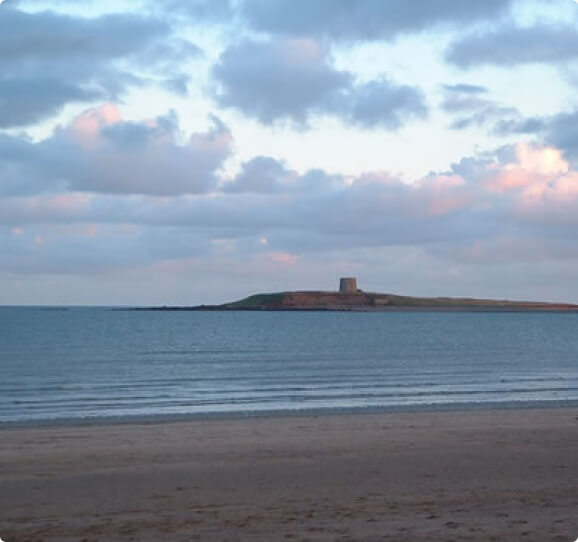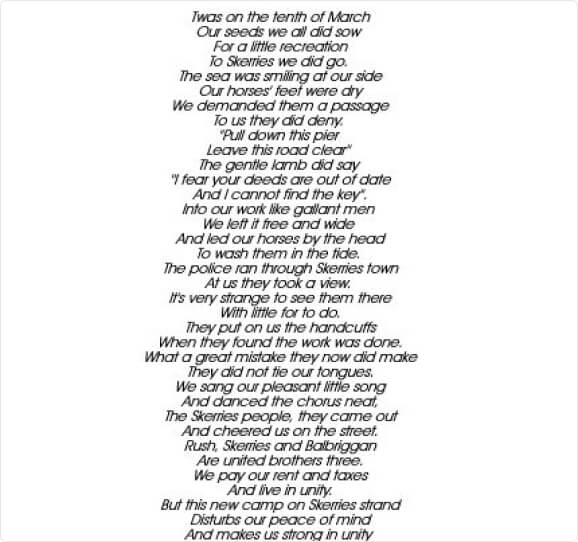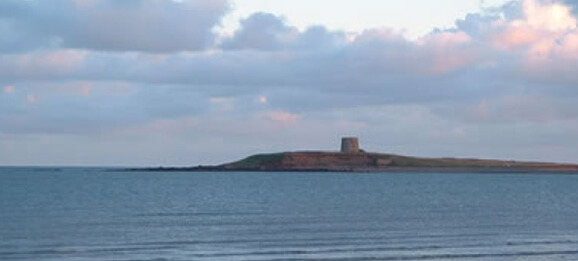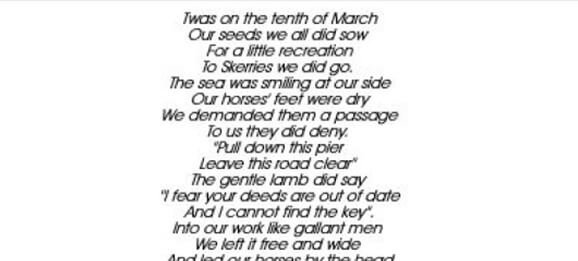History Of Shenick Island
Shenick is the largest of the islands and can be approached on foot at low tide. It gets its name from the Irish ”sionnach,” meaning a fox. Standing at one end of the island is a Martello tower. In 1878, a ”war” began between the farmers of Rush and the landlord of Skerries, Ian Hamilton. The farmers had long gathered seaweed, which grew plentifully around Shenick Island and was known locally as ”woar,” to use as a fertiliser for their crops. Hamilton was trying to impose a payment for each load of seaweed. To enforce this he built a wall to prevent the farmers reaching the shore and blocked their route out to the island.
The Rush men retaliated by breaking down the wall. This began a legal battle, which lasted until 1896, and it was fought with great bitterness both in the courts and on the ground. Hamilton claimed ownership of the shore and the islands because letters patent, [documents from the government giving ownership], were granted to the Earl of Thomond, from whom the Hamilton family had bought lands of Skerries in 1721.
The Rush men claimed that the shore was owned by the monarch on behalf of the people.The case dragged on for nearly twenty years and Hamilton eventually won it in 1896. From that date the farmers had to pay one shilling, 6cp in today’s money, for each load of seaweed. This payment lasted until 1946, when the seaweed war, was almost a forgotten memory .The following poem was written at the time about an incident during the seaweed war, when the wall blocking access to the beach was broken.
In 1917 the island was purchased by Lawrence McDonagh and was farmed by his family up until the 1950s. Since 1987 it is a wildlife reserve run by the Fingal branch of the Irish Wildbird Conservancy Council.
- Back to: History of Skerries Index Page.





